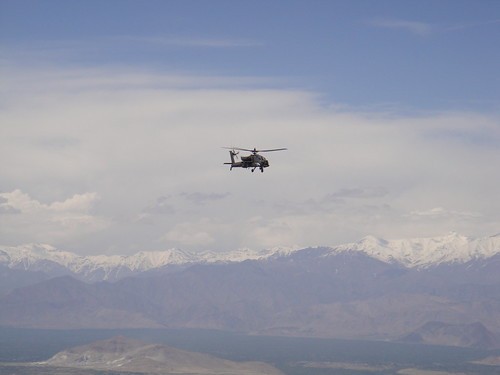Low_Sky
No longer a newbie, moving up!
- Joined
- Jun 9, 2013
- Messages
- 282
- Reaction score
- 182
- Location
- Alaska
- Can others edit my Photos
- Photos NOT OK to edit
The photo below was taken with my Sony point-and-shoot on auto with the following settings: Focal length = 25mm, f/7.1, 1/500th, ISO-80. I know this isn't a good photo, but I'm getting my first DSLR soon, and I'm trying to get familiar with what would have made this a good photo. My question here is specifically is about the effects of focal length, but if you have other insights I'd love to hear them.
Given that this was taken with a 25mm focal length and all other factors being equal, would a 50mm focal length have made this bird twice as big and shown half as much background, or am I misunderstanding the math involved? Following the same logic, would a 200mm lens get eight times closer (that would have the Apache filling almost the whole frame)?
I like this photo because the subject, what's in the background, and where this photo was taken from trigger some emotions for me, and I just think Apaches are cool. I'm trying to learn what equipment and techniques would have made this into a good photo instead of just another point and shoot snapshot. Thanks!

Given that this was taken with a 25mm focal length and all other factors being equal, would a 50mm focal length have made this bird twice as big and shown half as much background, or am I misunderstanding the math involved? Following the same logic, would a 200mm lens get eight times closer (that would have the Apache filling almost the whole frame)?
I like this photo because the subject, what's in the background, and where this photo was taken from trigger some emotions for me, and I just think Apaches are cool. I'm trying to learn what equipment and techniques would have made this into a good photo instead of just another point and shoot snapshot. Thanks!













